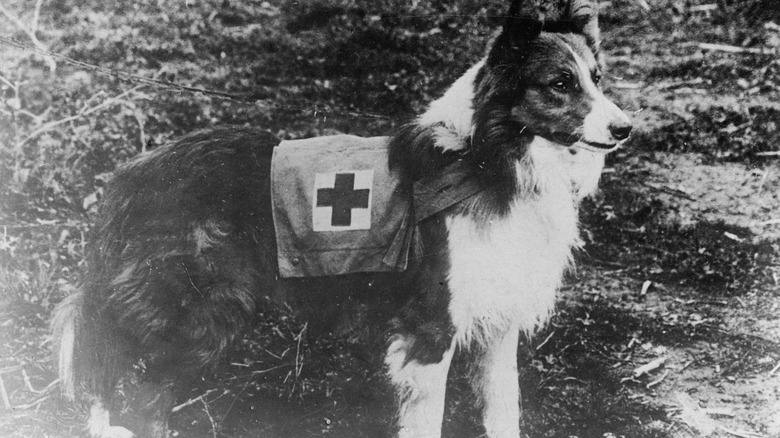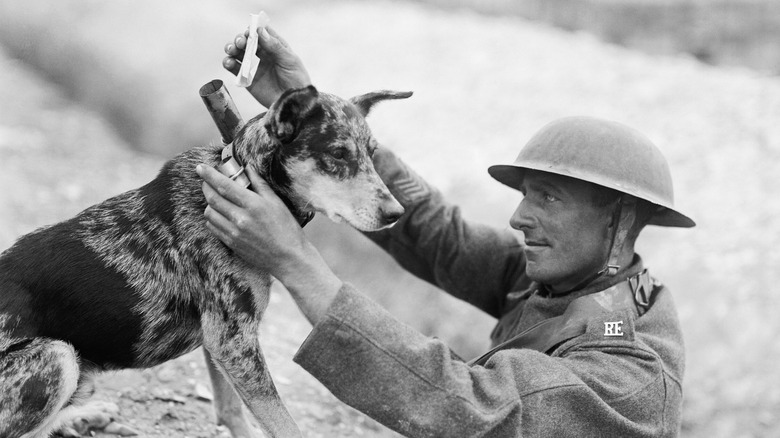How Dogs Actually Played A Role In World War I
They say that dogs are man's best friend, and this truth became particularly evident during World War I. In what would later become one of the deadliest conflicts in history, warring governments used every tool at their disposal to support their cause. According to the WWI Centennial Commission, this included the use of canines in various capacities. From providing medical help to wounded soldiers to carrying messages across enemy lines, dogs played a crucial role in the outcome of the Great War.
Even though they are animals, canines, in particular, are pretty intelligent. Indeed, they can be taught to do all sorts of things, including many combat roles. One of the most important jobs dogs were given during the war was security. In the trenches, soldier security was a top priority, so they utilized guard dogs to alert them to approaching enemies. Per History, the most well-known security dog of the war was a little Staffordshire terrier mix named Stubby. Though he originally went on tour with the U.S. 102nd Infantry as a mascot instead of a war dog, his doggy intuition ended up saving the entire unit from a mustard gas attack. Overall, Stubby ended up serving in 17 battles and even sustained his own battle wounds. He was also the first dog to be given rank by the U.S. Armed Forces and became Sergeant Stubby.
First responders, messengers, and loyal companions
In addition to their importance for security purposes, dogs also played a major part in the medical treatment of wounded soldiers. Known as casualty dogs or mercy dogs, it was their job to locate the injured or dying on the battlefield, as stated by We Are The Mighty. Oftentimes, these dogs carried medical supplies, as well, which would allow troops or their comrades to provide aid until help arrived. If a soldier was beyond help, these dogs were trained to remain with the dying individual so that they would not spend their last moments alone. It is estimated that thousands of soldiers owe their lives to these amazing creatures.
While these dogs were largely used for security and medical purposes, they also did a handful of other interesting jobs as well. According to WWI Centennial Commission, these pups were used to carry messages, track and detect explosives, and control pests and vermin in the trenches. Arguably their most important job, though, was to simply provide love and companionship for the war-ravaged soldiers who were far from home.

